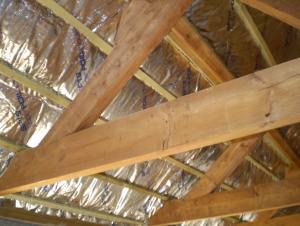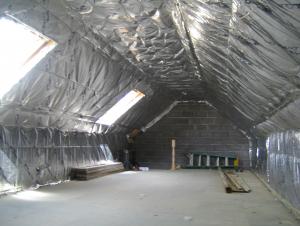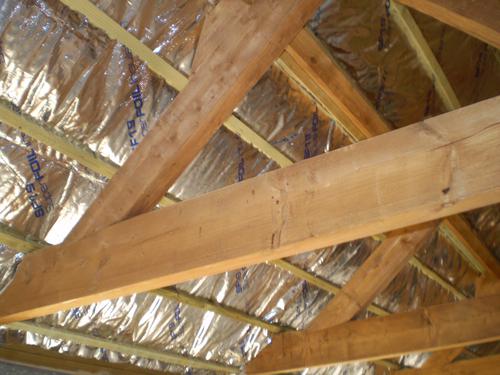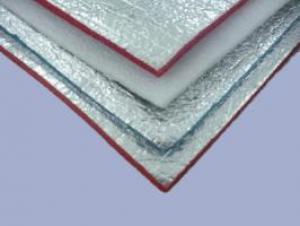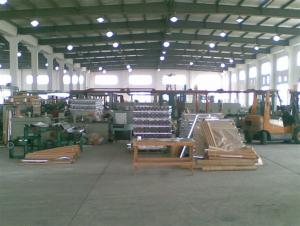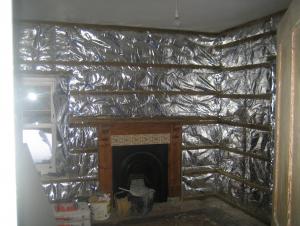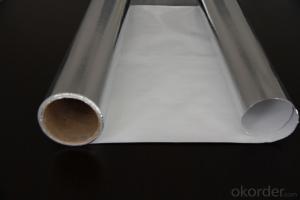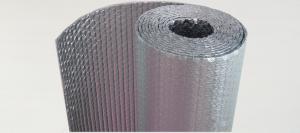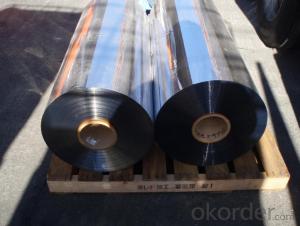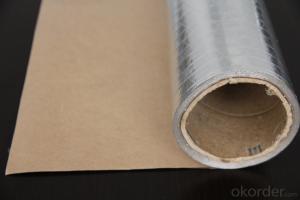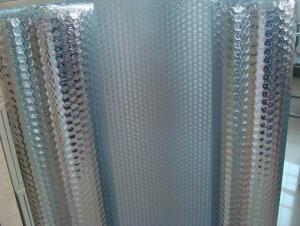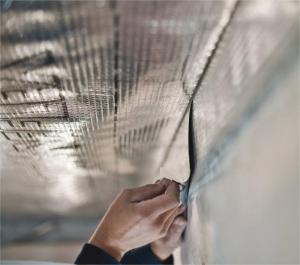Aluminum Foil Facing FPC-Aluminum Foil Woven Fabric
- Loading Port:
- China Main Port
- Payment Terms:
- TT OR LC
- Min Order Qty:
- -
- Supply Capability:
- -
OKorder Service Pledge
OKorder Financial Service
You Might Also Like
Specifications
aluminum foil mesh cloth/fiberglass mesh backed alu foil:To be sealed on glass wool or other duct wraps of HVAC system
Detailed Product Description
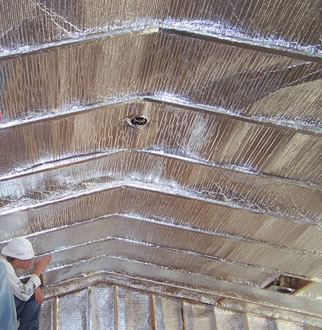
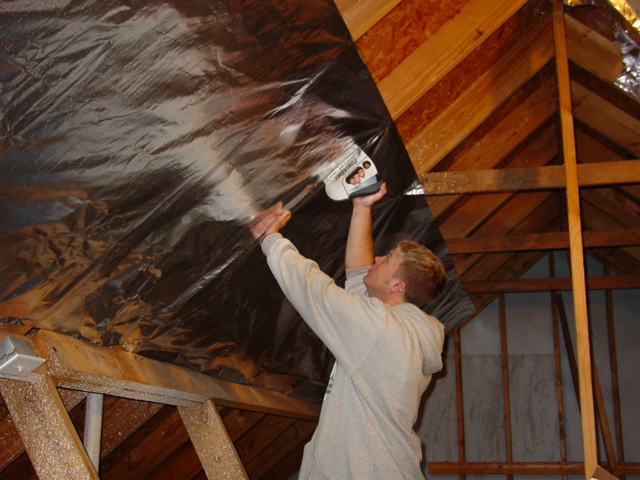
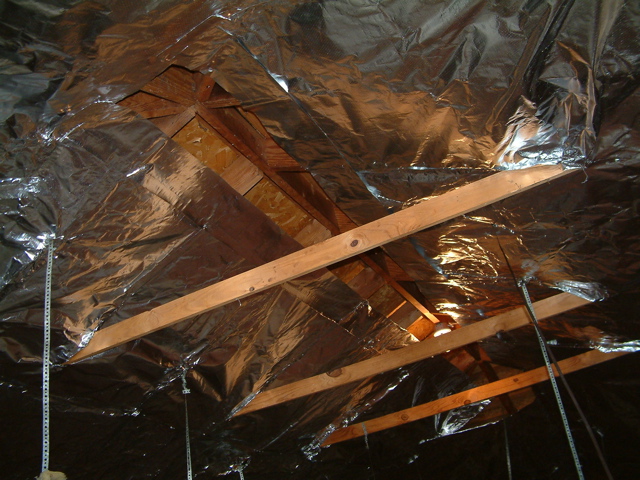
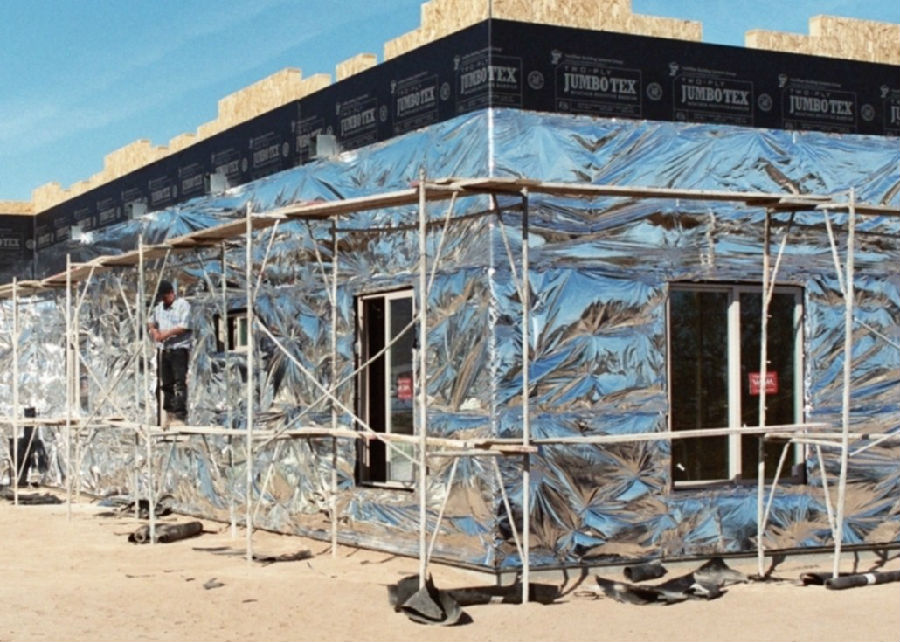
Reflective Insulation
1.Alu. Foil:7microns
2.Kraft paper:50/60gsm
3.Tri-way scrim
4.wall & house insulation
Model 1:Double side reflective alu foil FSK:
Model: FSK-7160A
7u AL/ 3 way fiberglass Scrim: 8 x 12mm / PE / Kraft: 60gsm / PE /7u AL
Model: FSK-7160B
7u AL/ 2 way fiberglass Scrim: 12.5X12.5mm / PE / Kraft: 60gsm/ PE /7u AL
Model 2:Kraft paper:
Model: FSK-7160A
7u AL / 3 way fiberglass Scrim: 8 x 12mm / PE / Kraft: 60gsm
Model: FSKV-7150B
7u AL/ 2 way fiberglass Scrim: 12.5X12.5mm / PE / Kraft: 50gsm
Specifications:
1) Roll width: 1.2, 1.25, 1.3, 1.35m
2) Roll length: 50-100m.
Application:
To be sealed on glass wool or other duct wraps of HVAC system, or to be used as sound/heat insulator for high-rise buildings and hotels, or works as vapor barrier and thermal insulation facing for metal building. Excellent thermal insulation materials of the steam heating pipelines, sound-proof materials in construction and the protective layer of glass wool blanket as well as the packing materials for the export equipment with excellent functions of non-combustible, heat isolation, vapor barrier, mildew proof, anti-corrosion, and sound absorbability.
- Q: This question asks for methods to properly store aluminum foil to ensure its longevity.
- <p>To store aluminum foil properly and make it last longer, keep it in a cool, dry place away from direct sunlight. Use a foil container or a resealable plastic bag to store it. Avoid stacking heavy items on top of it to prevent crushing. When using, always cut the foil from the end to minimize exposure to air, which can cause it to oxidize and weaken. Additionally, you can use a paper towel to wipe the foil before storing to remove any food particles that might cause it to stick together or degrade in quality.</p>
- Q: What are some suggestions to ensure plastic containers are used in a more hygienic and long-lasting manner?
- <p>To use plastic containers more hygienically and durably, follow these tips: 1) Always wash containers with warm soapy water and rinse thoroughly before and after each use. 2) Avoid putting hot foods or liquids directly into plastic containers to prevent warping and potential chemical leaching. 3) Do not use scratched or damaged containers as they can harbor bacteria and are more likely to break. 4) Store containers in a dry, cool place away from direct sunlight to prevent degradation. 5) Regularly inspect containers for signs of wear and replace them when necessary. 6) Use containers within their recommended temperature range to maintain their integrity and safety.</p>
- Q: This question asks for methods to clean aluminum foil after it has been used for cooking and has old food stuck to it.
- <p>To remove old food from aluminum foil facing after cooking, start by letting the foil cool down to avoid burns. Then, use a plastic scraper or the edge of a credit card to gently scrape off the food particles. For stubborn residue, you can soak the foil in warm, soapy water for a few minutes before scrubbing with a soft sponge or cloth. Avoid using metal scrubbers as they can scratch the foil. After cleaning, rinse thoroughly and dry before storing or reusing.</p>
- Q: Explain the distinctions between aluminum foil facing and plastic wrap, including their composition, uses, and properties.
- <p>Aluminum foil facing is a thin layer of aluminum used for insulation, moisture protection, and as a barrier to light and air. It is commonly used in construction and food packaging for its heat and cold resistance. Plastic wrap, on the other hand, is made from plastic polymers like polyethylene and is primarily used for food storage, keeping food fresh by sealing in moisture and preventing contamination. Unlike aluminum foil, plastic wrap is transparent, clingy, and does not conduct heat, making it unsuitable for cooking or insulation purposes.</p>
- Q: This question asks for the most effective method to smooth out wrinkles in aluminum foil facing material.
- <p>The best way to remove wrinkles from aluminum foil facing is to use a combination of heat and gentle stretching. First, preheat your iron on a low setting without steam. Place a thin cloth or parchment paper over the wrinkled aluminum foil facing to protect it from direct heat. Then, gently press the iron over the cloth, moving in a smooth, continuous motion. As the foil warms, it will become more pliable, allowing you to gently stretch and smooth out the wrinkles. Be cautious not to apply too much pressure or heat, as this can damage the foil.</p>
- Q: What are the most suitable materials for creating aluminum foil facing?
- <p>The best materials for making aluminum foil facing are typically aluminum alloys, specifically 1100, 3003, or 8011 series alloys. These alloys offer excellent formability, corrosion resistance, and reflectivity, which are crucial for applications like insulation, construction, and heat management. Additionally, the facing material often includes a layer of polyester or polyethylene film to enhance durability and prevent tearing. The choice of material can also depend on specific requirements such as temperature resistance, UV resistance, and environmental conditions.</p>
- Q: Is it possible to recycle aluminum foil facing multiple times? If yes, what is the process involved?
- <p>Yes, aluminum foil facing can be recycled multiple times. The recycling process involves collecting and sorting aluminum waste, which is then shredded or crushed. The material is melted in a furnace at high temperatures, and the molten aluminum is poured into molds to form new products. This process can be repeated indefinitely without losing the quality of the aluminum, making it one of the most recycled materials globally. The recycling of aluminum saves energy and reduces the environmental impact compared to producing aluminum from raw materials.</p>
- Q: This question asks for a list of various types of aluminum foil facing that can be found in the market.
- <p>There are several types of aluminum foil facing available in the market today, including: 1. Standard Aluminum Foil Facing, which is the most common type used for insulation and moisture protection. 2. Reinforced Aluminum Foil Facing, which is stronger and more durable, often used in high-temperature applications. 3. Embossed Aluminum Foil Facing, which has a textured surface for improved aesthetics and grip. 4. Coated Aluminum Foil Facing, which is coated with materials like polyethylene for added protection against chemicals or moisture. 5. Perforated Aluminum Foil Facing, which has small holes for ventilation or drainage. 6. Laminated Aluminum Foil Facing, which combines aluminum with other materials for enhanced properties. These types cater to various applications in construction, food packaging, and other industries.</p>
- Q: Is it safe to use aluminum foil facing inside a pressure cooker and does it pose any risks?
- <p>Using aluminum foil facing in a pressure cooker is generally safe and is commonly used to prevent food from sticking to the pot. However, it's important to ensure that the foil does not block the pressure release valve or the vent, as this could lead to a buildup of pressure and potentially cause the cooker to malfunction. Always follow the manufacturer's guidelines for your specific pressure cooker model to avoid any safety issues.</p>
- Q: This question asks about the distinction between aluminum foil made from new raw materials and that made from recycled materials.
- <p>Yes, there is a difference between 'virgin' and 'recycled' aluminum foil. Virgin aluminum foil is produced from newly mined bauxite ore and is considered to be of higher purity. It is often preferred for applications requiring high quality and consistency. Recycled aluminum foil, on the other hand, is made from aluminum waste that has been collected, sorted, and reprocessed. It is more environmentally friendly as it reduces waste and energy consumption. However, recycled aluminum foil may have slight variations in thickness and quality due to the recycling process.</p>
Send your message to us
Aluminum Foil Facing FPC-Aluminum Foil Woven Fabric
- Loading Port:
- China Main Port
- Payment Terms:
- TT OR LC
- Min Order Qty:
- -
- Supply Capability:
- -
OKorder Service Pledge
OKorder Financial Service
Similar products
Hot products
Hot Searches
Related keywords
